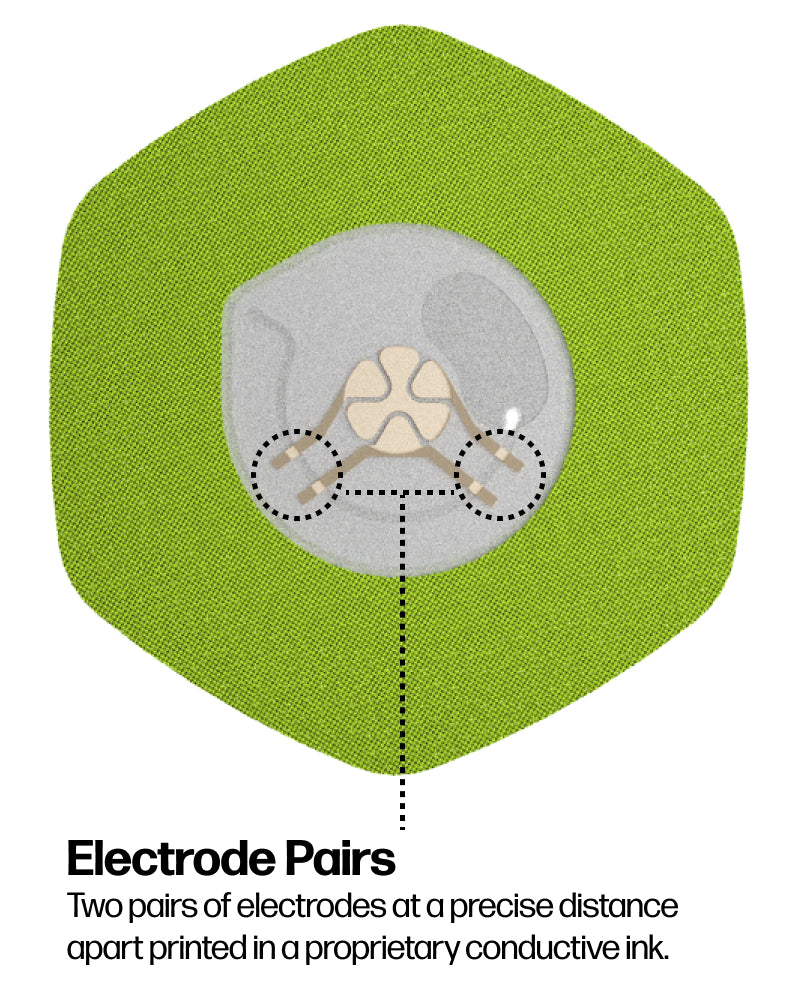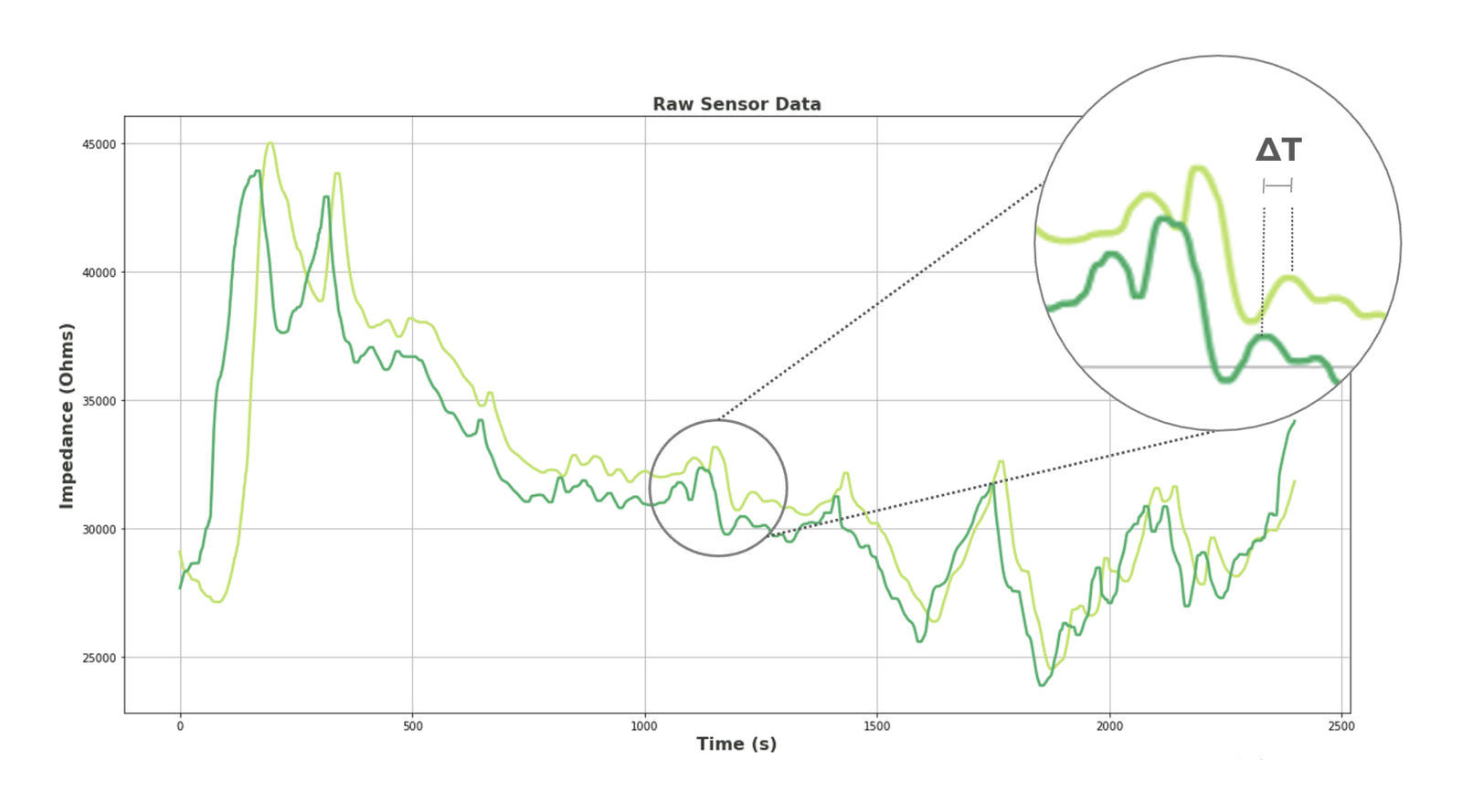written by Brad Wright and Olivia Crozier
Sweat loss is a key metric needed to determine the hydration strategy that works best for you. The Nix Hydration Biosensor is a dynamic tool that senses and then extrapolates your sweat loss in real time. Read more to understand the back end calculations that are occurring while your sweat is being sensed.
Sensing Sweat Loss
When you apply a Sweat Patch to your bicep, the patch seals off the outside environment, effectively isolating your sweat during a workout. As your intensity picks up and you begin to sweat, the patch begins sensing your fluid losses. The sweat enters the patch through an inlet, travels down the flow path, and then exits the flow path at the opposite end through a small outlet. The sweat’s electrical conductivity is measured through two separate sets of electrodes also located on the back of the patch. Our proprietary machine learning neural network leverages these time series and calculates how long it takes for a particle of sweat to travel between the pairs of electrolytes. Since we know the distance between them, and the time that it takes to get from point A to point B, we can calculate the velocity of a sweat particle. Velocity = Distance ÷ Time. That velocity translates into your personal local sweat rate on the bicep.


Calculating Whole Body Sweat Rate
The Nix Biosensors algorithm takes into account your local sweat rate (the location of your Sweat Patch on the bicep) which is then extrapolated to your whole body sweat rate. This calculation is based on a peer-reviewed published study that established correlations between local and full-body sweat rates. Our algorithms are anatomically specific - in other words, they rely on the sensor being placed on the lateral portion of the bicep to produce a reliable and accurate whole body sweat rate. If you were to put your sensor elsewhere, like your forehead, back, or chest where regional sweat rates are different, any extrapolations would introduce high rates of error and would result in misleading sweat loss and sweat composition metrics.
Understanding Sweat Rate (Sweat Losses Per Hour)
Starting a workout on the Nix App begins the collection of your data. From that point on, all metrics are divided by the duration of your workout. Therefore, starting a workout too soon in the Nix App before actually beginning activity can skew the Sweat Rate data due to the fact the rate is calculated based on the workout length within the app. If a user starts a workout on the Nix app at 9:00am, but doesn’t start to actually exercise until 9:20am, those twenty minutes will be included in the total workout duration. The longer the app is running before the workout has started, the more skewed the sweat rate metrics can be.
Fluid Loss is most often depicted as a rate in fluid ounces lost per hour.
⬢ Sweat Rate = Total Sweat Loss ÷ Total Workout Length
⬢ Example: 36 oz lost ÷ 90 minute workout = 24 fluid oz lost per hour
Once a user has logged several workouts in the Nix app, they start to establish their baseline. Knowing the average sweat rate helps to inform athletes how much they should consider drinking each hour of their workout.





